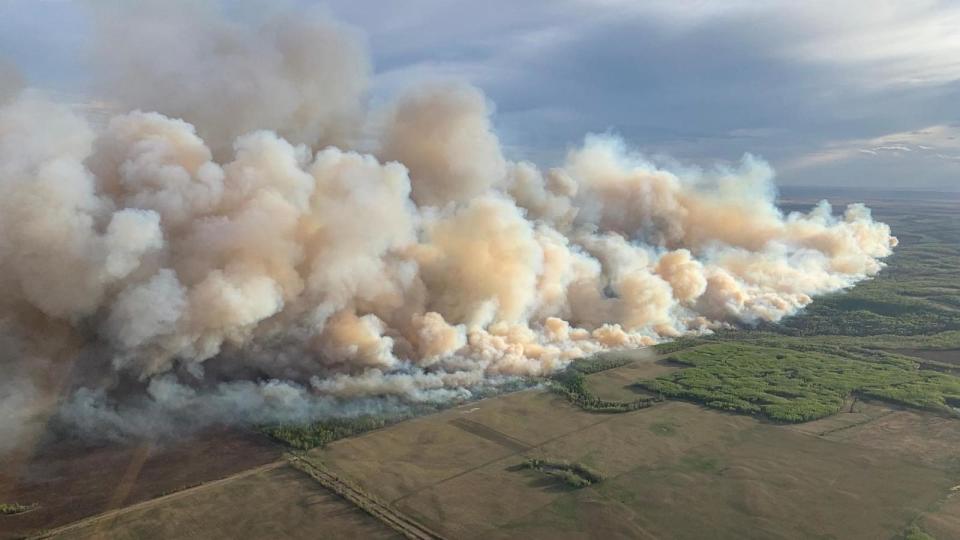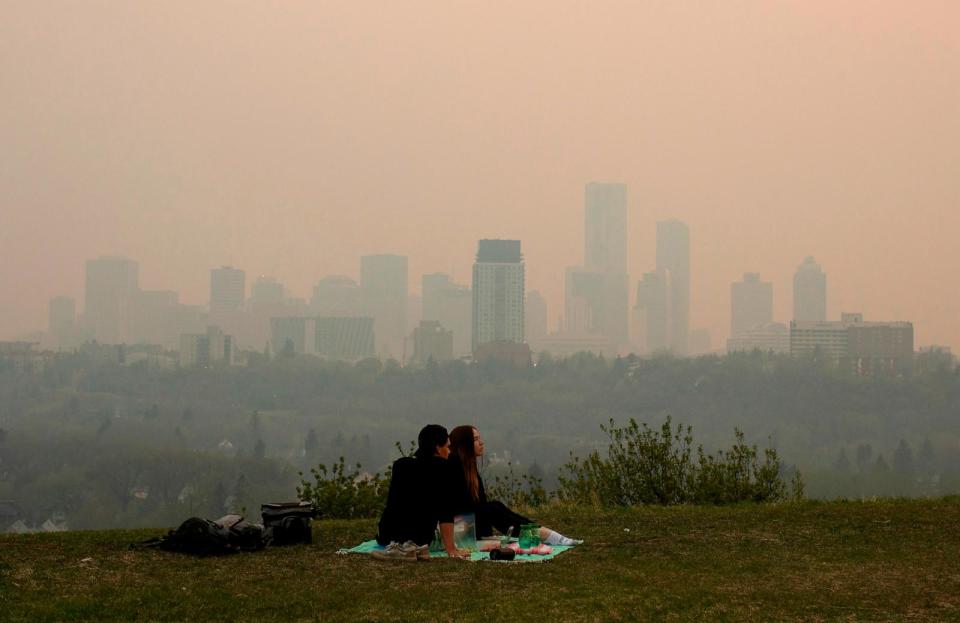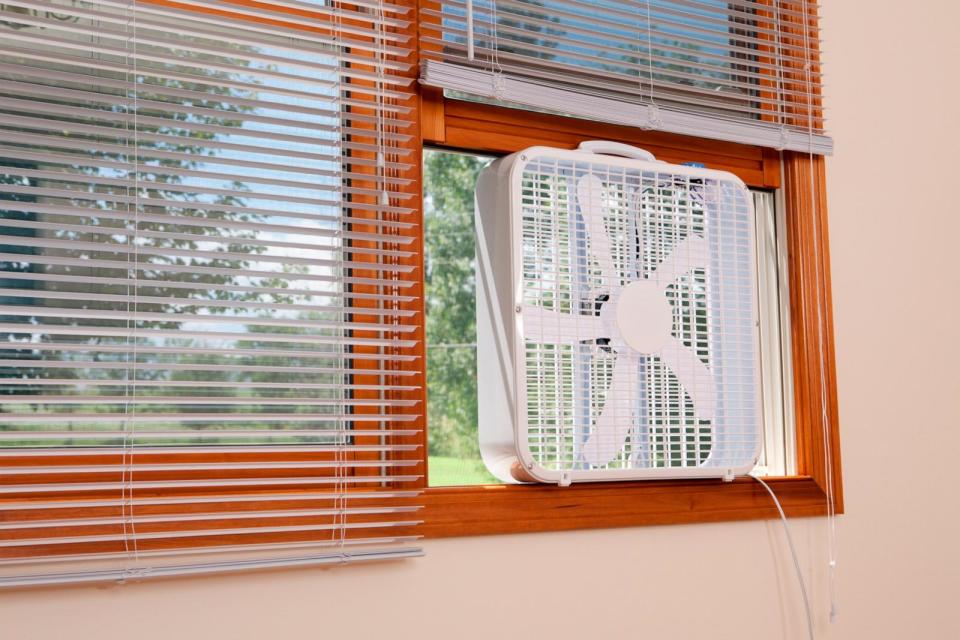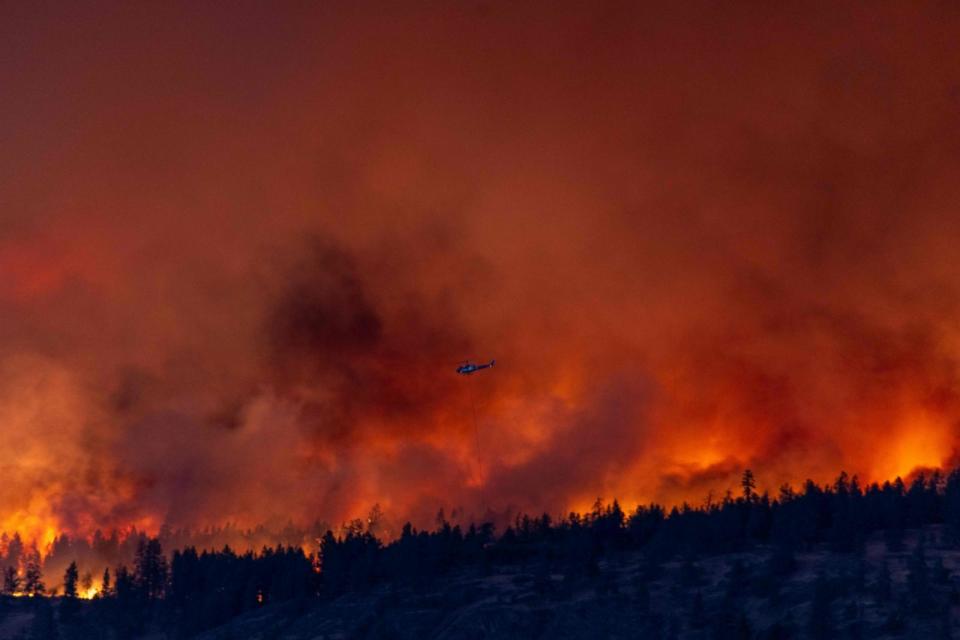Canadian wildfire smoke preparedness: How to make a DIY air purifier
The damage of wildfires can expand far beyond the active blaze, as toxic smoke from Canadian wildfires crosses borders, enters homes and triggers health concerns, experts say.
As of Monday, officials said at least 40 of the more than 140 active fires burning in the Canadian wildfires have been labeled "out of control," including one that started on Friday in British Columbia and has since spread to 4,200 acres.
Most of the active wildfires, at least 90, are in British Columbia and Alberta provinces.
MORE: Smoke from Canadian wildfires reaches US, Minnesota under air quality alert
However, as the string of wildfires rages in the North, the wildfire smoke spread to parts of the U.S., prompting Minnesota officials to issue the state's first air quality alert of 2024 on Sunday.
Health effects of wildfire smoke
As the threat of an active wildfire season looms, there are steps individuals can take to mitigate the effects of wildfire smoke in their homes, according to Professor Brian G. Henning, director of the Institute for Climate, Water and the Environment at Gonzaga University in Washington state.
"We know that many community members don't have central air, and that means that they may not have the ability to clean their air when we have these really intense wildfire smoke events," Henning told ABC News, warning, "Those have long-term health impacts."

Wildfire smoke poses startling health risks to everyone, but especially individuals with existing health conditions. Wildfire smoke is associated with strokes, heart disease, respiratory disease, lung cancer and early death, according to the EPA.
Henning added, "Of course, those people who have respiratory issues or heart disease are immediately affected, but all of us are negatively impacted over time."

With the effects of wildfire smoke in mind, Henning explained why clean air should not be considered a luxury in America and that there are less costly alternatives to branded air purifiers.
"We need to bring more resources into our community to help those community members, especially low-income residents, to get improved air filtration capacities," Henning said.
DIY air purifier
Making an air purifier at home can be as simple as using a box fan, a furnace filter that is the same size or larger than that fan and a bungee cord to secure the filter around the perimeter of the fan, according to Henning.
He recommends placing the filter on the back of the box fan, the air intake side, so that the air blowing out of the fan into your home has been purified.
MORE: Toxic smoke from Canadian wildfires could impact health of millions in the US
It is important to keep all windows and doors in your residence securely shut to limit the amount of smoke entering, according to Henning.
To learn more about DIY air purifiers visit the Gonzaga University Institute for Climate, Water, and the Environment's resource page on smoke and air quality preparedness.

"There are lots of DIY explanations about how to create a really simple air filtration device for your home. So that next time you have a bad wildfire smoke event you and your family will be better protected."
In terms of wildfire protection, Henning believes, "That whole idea of an ounce of prevention is better than a pound of cure is true."
Wildfire smoke is worsening
Wildfires are expected to worsen across the U.S. and by mid-century, the effects of wildfire smoke could bring startling health risks to 125 million Americans, according to a study released earlier this year.
For decades, the effects of wildfires were felt mainly on the West Coast, however, the dangerous rise of wildfires, and the toxic spread of smoke, is becoming a national crisis, and research from First Street Foundation, published in February, shows it's escalating.
MORE: Wildfire smoke to worsen across US, putting 125 million at risk: Study
"A lot of people in the Midwest and the Northeast never really thought about the AQI," Dr. Jeremy Porter, head of Climate Implications research for First Street Foundation, told ABC News at the time.

"All of a sudden, it's on the news. Every day the weatherman is putting the AQI up at the beginning of the day, we became really familiar with an issue that people in the West have been dealing with for decades," Porter said.
Porter said that there are 83 million people already exposed to a 'red day,' or what we call an unhealthy air quality day in America.
"If you project the climate into the future 30 years, we're expecting to see that grow to about 125 million people," Porter said.
Canadian wildfire smoke preparedness: How to make a DIY air purifier originally appeared on abcnews.go.com

